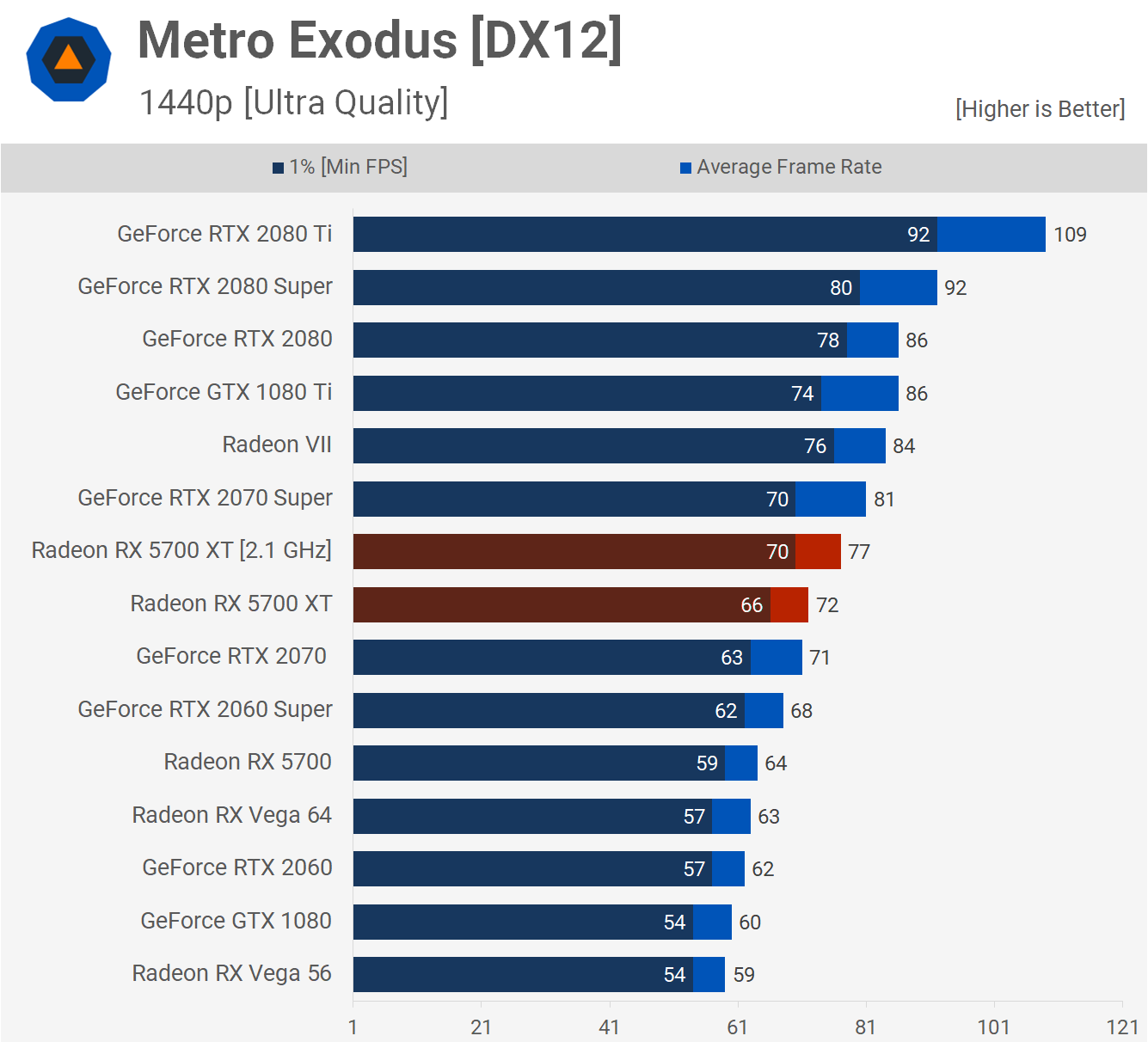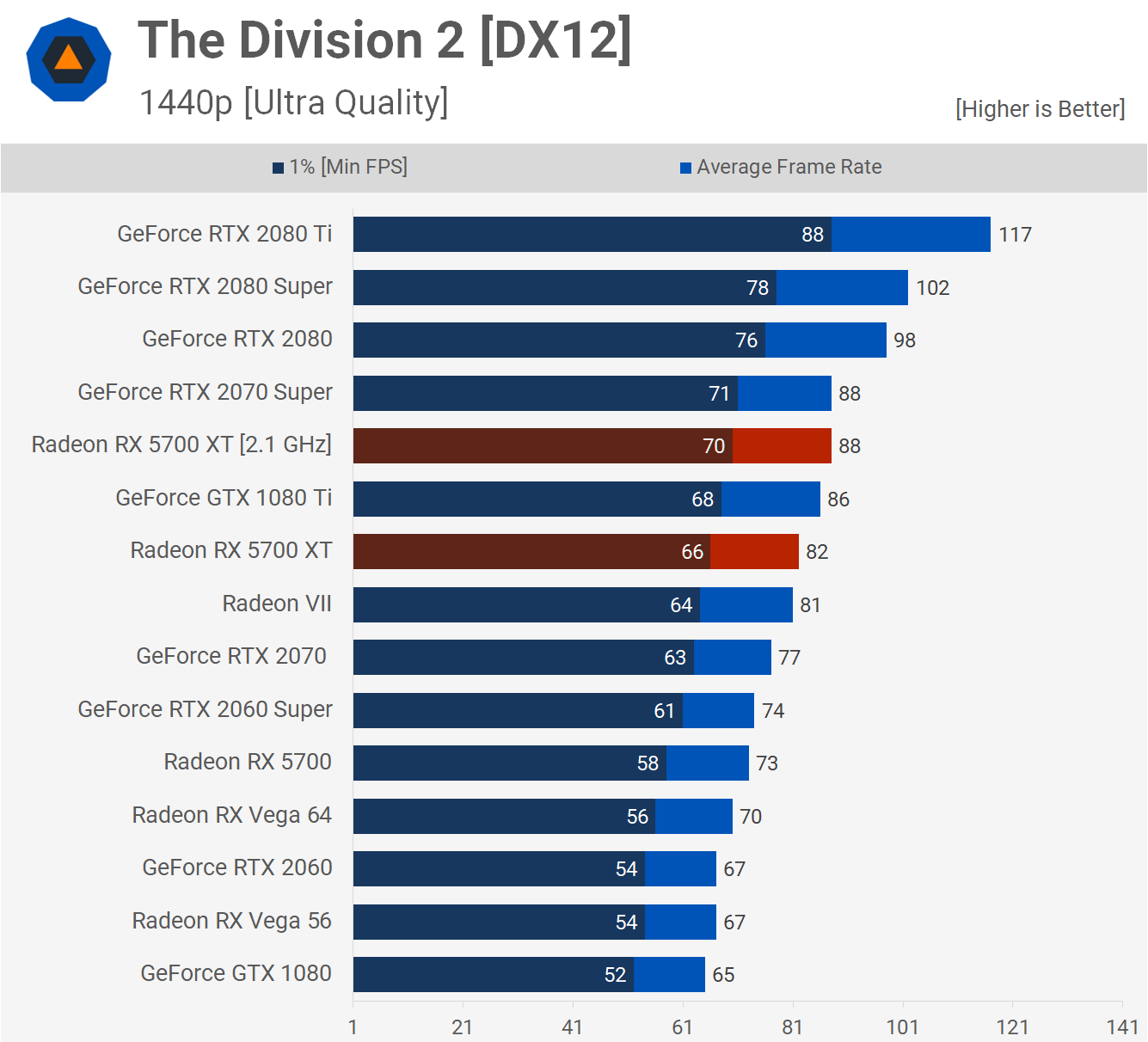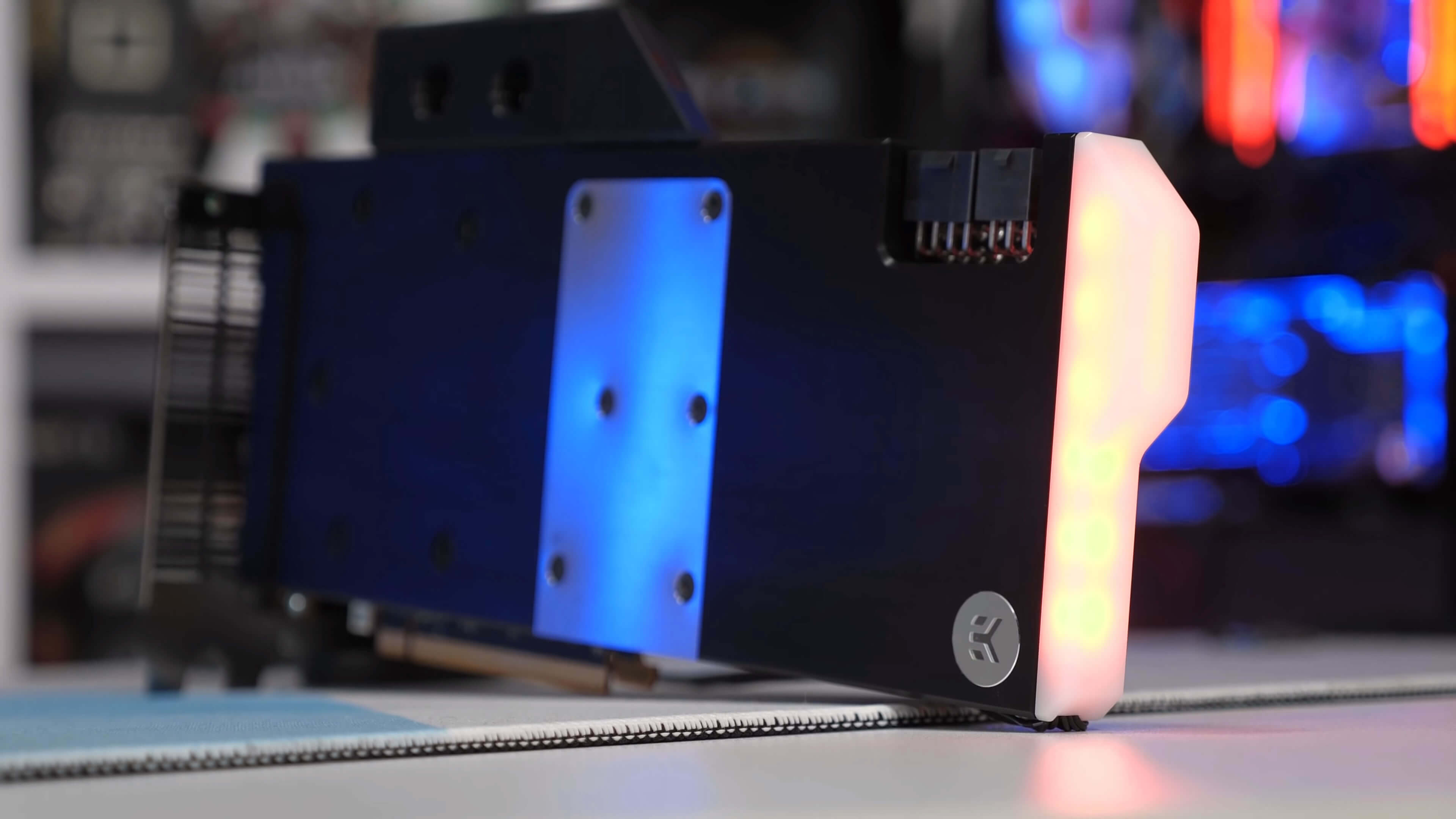After testing the AMD's new Radeon 5700 GPUs and Nvidia's RTX Super answer, we are particularly happy about the value offered by the latest Radeons. While GeForce RTX boards still dominate at the high-end, the $400 5700 XT is very attractive at the designated price point. But what if we pushed the new hardware to its limits?
Leveraging EK's new Vector water-block for Navi we are about to find out, as they were kind enough to send one over right away for this test. In our day-one RX 5700 series review we noted that increasing the fan speed of the 5700 XT to an ear bleeding 100%, we could boost the GPU from ~1800 MHz up to 2050 MHz.
Shortly after that, Igor's LAB published an interesting piece detailing users' findings on how it is possible to bypass AMD imposed overclocking limits at the BIOS level. Some simple yet genius Windows registry modifications allow us to circumvent AMD's limits and increase the GPU frequency as high as 2300 MHz, while also increasing the power limit.

Of course, the GPU silicon has to be good enough to do 2.3 GHz and sadly neither of our retail cards were capable to run at even 2.2 GHz. We saw the limit at 2.1 GHz which is still a ~18% overclock, so we're expecting a nice performance uplift.
After an hour-long F1 2019 loop, the 5700 XT in its stock configuration with the reference blower-style cooler runs at around 1780 MHz. The card reaches its peak operating temperature of 84 degrees in a room with a 21 C ambient temperature.
Under the same conditions with EK Vector block installed and attached to a 240mm radiator with two quiet 120mm fans, the 5700 XT peaked at just 45 C. That's a massive 39 C drop in temperature. The GDDR6 memory also dropped by 20 degrees and the VRM temperature dropped by as much as 30 degrees.

With the "EvenMorePower5700XT" registry modification installed, we found 2.1 GHz to be the limit of both our Asus and PowerColor reference cards. We tried a few other tweak profiles but the same 2.1 GHz hard limit on our hardware was observed.
This remains a decent 18% overclock and given the 5700 XT was only 9% slower on average than the RTX 2080 (non Super), this overclock should push the 5700 XT ahead. Of course, you can also overclock the RTX 2080 but that's besides the point, we're trying to achieve 2080-like performance at a significant discount. So let's fire up our i9-9900K GPU test rig and see how the liquid cooled 5700 XT performs.
Benchmarks
The first test in our bench was F1 2019 where we see a modest 9% bump in performance for the average frame rate and a slightly less impressive 6% boost for the 1% low result. This allowed the 5700 XT at 2.1 GHz to match the GTX 1080 Ti, though it was still 5% slower than the RTX 2080, not exactly a big margin, but we were hoping the overclock would yield better results.

Battlefield V shows a far less impressive 5% boost in performance for the average frame rate, though the 1% low performance was improved by a 7% margin. That 1% low is still a bit weak relative to the RTX 2080, but hey close enough for nearly $150 in savings.

Rainbow Six Siege sees the most impressive gain yet, a 10% boost in performance for the average frame rate. While this pushes the 5700 XT ahead of the stock 1080 Ti, it's still slower than the RTX 2070 Super and much slower than the RTX 2080 Super.

Next up we have Metro Exodus and here we see a mild 7% improvement in performance, going from 72 fps to 77 fps and that wasn't enough to catch even the 2070 Super.

Another 7% gain can be seen when testing with Resident Evil 2, though this time that was enough to at least match the RTX 2070 Super.

Shadow of the Tomb Raider disappointed with a 6% performance improvement from the overclock, but that was enough to at least match the GTX 1080 Ti and RTX 2070 Super.

Another 6% gain can be seen when testing Fortnite, here we're taking on an extra 6 fps, in our opinion it's not worth the trouble.

The Division 2 shows a 7% performance uplift for the 2.1 GHz overclock and that was enough to match the RTX 2070 Super in this title.

DiRT Rally 2.0 sees a minor 5% boost, going from 102 fps to 107 fps, so a disappointing result for this game.

The Radeon RX 5700 XT already killed it in Forza Horizon 4 and here we see the weak 3% improvement from the overclock was still enough to take out top spot, though we'd suggest we're probably becoming CPU limited at this point.

Far Cry New Dawn provides a 7% performance boost and this put the 5700 XT right on the heels of the RTX 2080 Super.

World War Z sees a 6% improvement in performance from the overclock.

Our last test shows a very disappointing 4% performance boost in Assassin's Creed Odyssey with the overclocked applied.

Power Consumption
For what was about a 7% boost in performance on average you're looking at an almost 40% increase in power consumption as the GPU power draw increased from just 186 watts right up to a Vega-like 258 watts (!).

Looking at total system consumption we see a 25% increase in power draw for the overclocked 5700 XT, making it slightly more power hungry than Vega 64 and around 30 watts more than the RTX 2080 Ti. In other words, the 2.1 GHz overclock destroys RDNA's efficiency.

What Just Happened?
To put it bluntly, that was disappointing. By simply looking at the power consumption of the otherwise very efficient 7nm Navi architecture, we've learned why AMD has put the restrictions on the frequency these cards can run at.
The Radeon RX 5700 XT is a great product and offers really good value, and we have high hopes for the upcoming AIB models that will let you run the cards cooler out of the box. On the other hand, your chances of pushing this thing to RTX 2080 Super or even vanilla 2080 levels of performance are slim – even at 2.2 GHz it's a stretch. Sure, in some games that are favorable to the red team the 5700 XT will pull off the upset, but overall it's not going to match the more expensive RTX models.
Spending $140 on the EK Vector Navi block takes the price of the 5700 XT to $540 and for that money you can buy the RTX 2070 Super which will deliver a similar level of performance. Increasing the cost of the 5700 XT by 35%, for at best 10% more performance, is not a good investment for pure performance sake.

Would you rather have an RTX 2070 Super or a liquid cooled Radeon RX 5700 XT? That one is up to you and your interest in getting a custom liquid cooling setup.
A third option would be to wait for board partners to release better air-cooled 5700 XTs, and frankly that option makes the most sense. We have tested our 5700 XT boards with decent air coolers and they will still run at 2.1 GHz while making very little noise, with temperatures in the 70 degree range. Expect custom AIB 5700 XT cards to hit shelves sometime next month.
Shopping Shortcuts:
- AMD Radeon RX 5700 XT on Amazon, Google Express
- AMD Radeon RX 5700 on Amazon, Google Express
- GeForce RTX 2070 Super on Amazon, Google Express
- GeForce RTX 2060 Super on Amazon, Google Express
- GeForce RTX 2080 Ti on Amazon, Google Express
- AMD Ryzen 9 3900X on Amazon, Google Express
- AMD Ryzen 5 3600 on Amazon, Google Express
- AMD Ryzen 5 2600X on Amazon, Google Express
